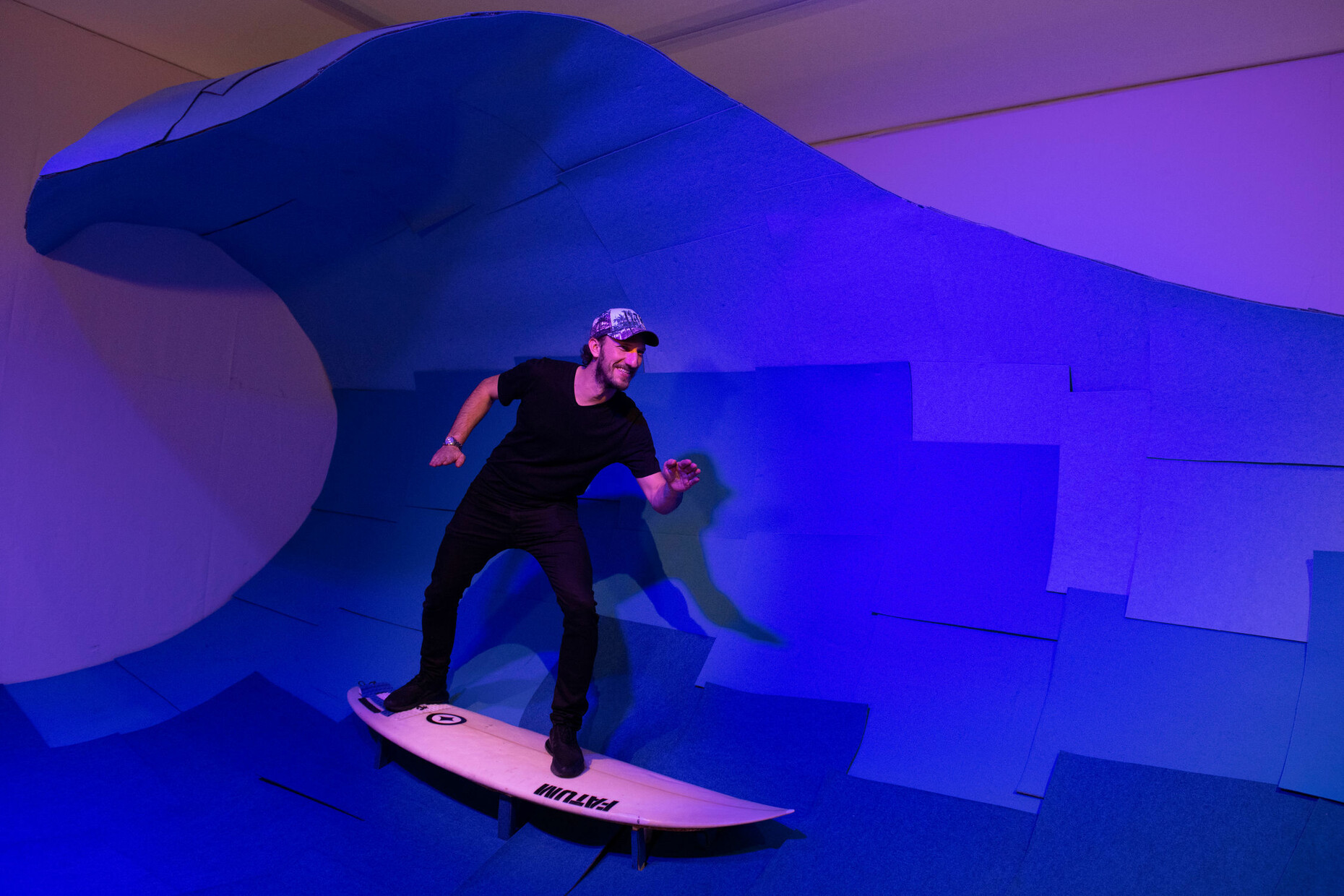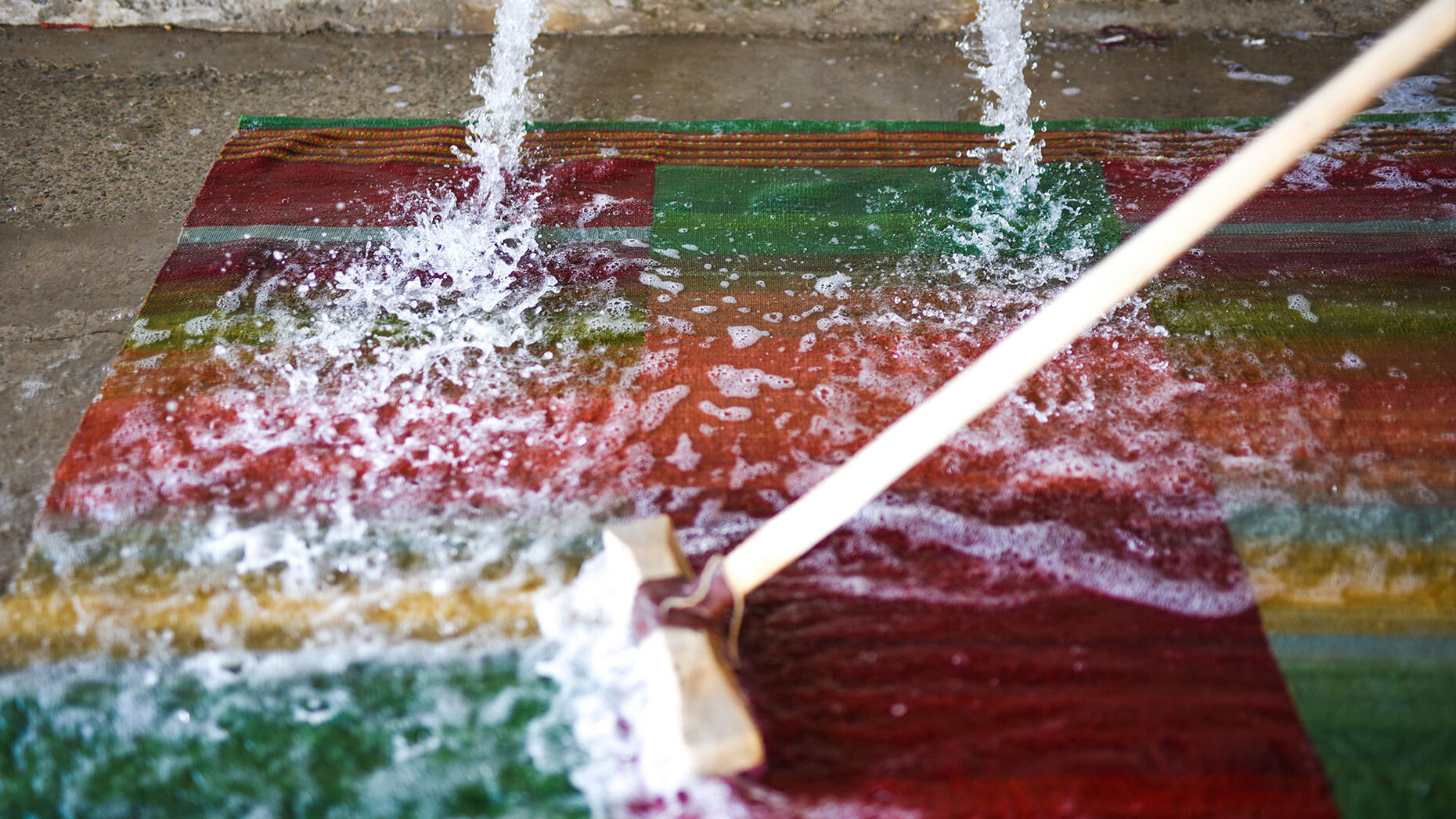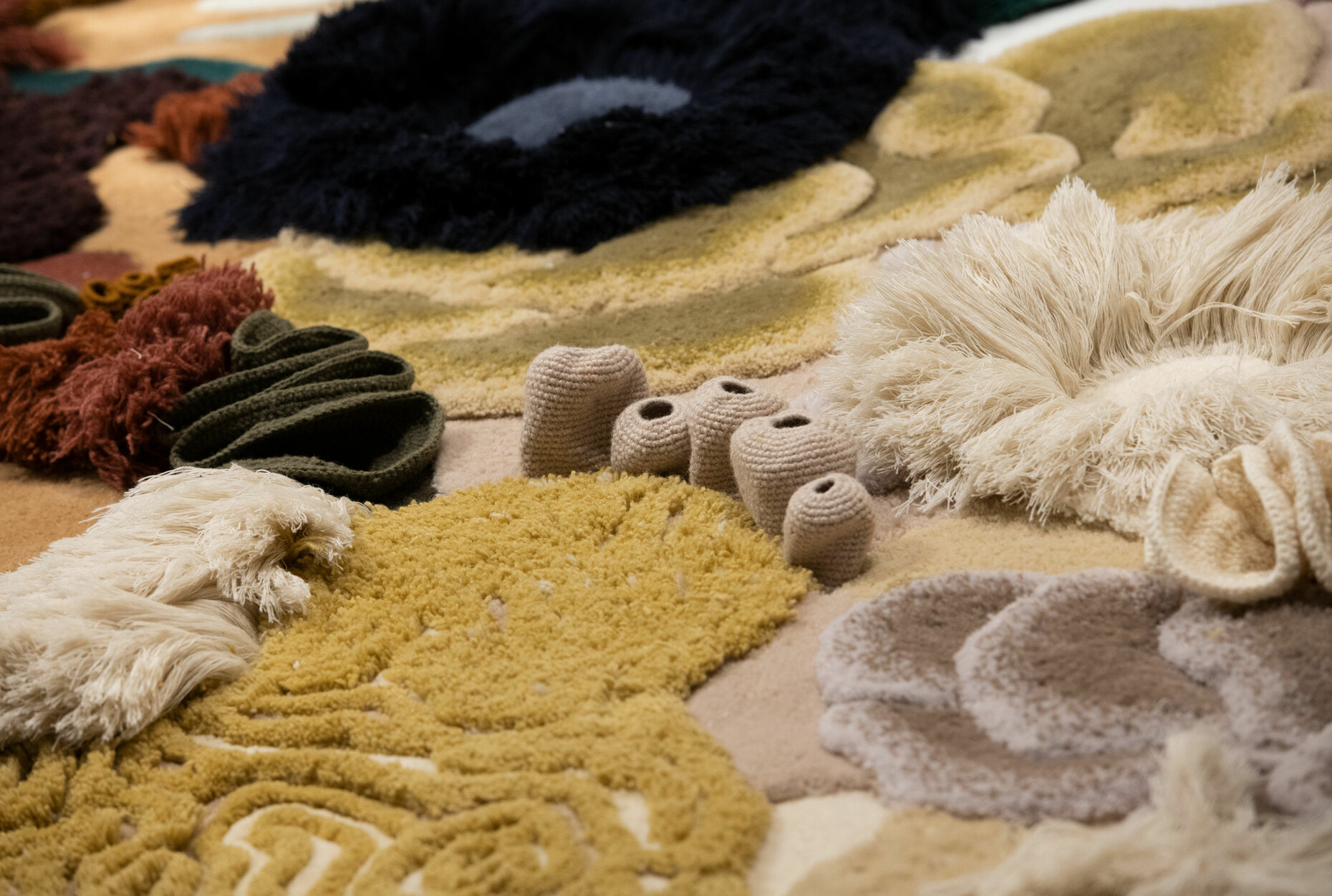Domotex 2019
Riding the recycled carpet wave
The attention of visitors to Domotex in Hanover was captivated by a fragile artwork. The “Red Dirt Rug” at the heart of the special “Training Trends” section was made of red Oklahoman sand. Young artist Rena Detrixhe brought this sand in specially all the way from her home, and shaped it into an Oriental rug pattern. However, for Detrixhe, the “Red Dirt Rug” symbolizes far more than a gimmicky trompe l’œil. As she sees it the rug encapsulates the history of her country, its violence, but also its beauty. It is, not least, this spiritual aspect that moved people who looked at the rug – it is surely not that often the case that so much significance is accorded to a bit of soil.
Human and digital networking
This year, “Framing Trends” in Hall 9 formed the beating heart of Domotex, with its landmark theme “Create’n’Connect” running through all the installations on show there, be they by artists, scientists or companies. Permanent digital networking was illustrated using all kinds of different approaches. Along with the many virtual and augmented reality applications – pretty well all the major manufacturers offered an app for virtually transporting the flooring of your choice to your own home – there were also playful interactions – even an app that allows two people separated from each other by a wall to sway in time with each other.
Media designer Konstantin Landuris from Munich was one of the exhibitors at “Framing Trends.” His installation “Wave Rider” consisted of a giant wave made of needled carpet by Findeisen. This wave is a symbol of our approach to resources and references the urgent problem of plastic in our oceans. Fittingly, the needled carpet was produced on a 100% recycled backing material. Recycling is in Findeisen’s DNA – established in 1921 as a textile recycling company inEttlingen, the company processed more than 943 metric tons of recycled wastefibers into underlayin 2017.
A responsible approach to resources is something of an obsession with flooring manufacturers. Everywhere you look, the focus is on sustainable or recycled raw materials. One example of this isEconyl.This PA6 yarn by Italian manufacturerAquafil is entirely manufactured from fishing nets, carpets or production waste, and is just as good as conventional PA6 yarns.
Naturalness with appeal
Swedish parquet manufacturer Bjelin, a subsidiary of Välinge, the inventor of the click-in system for floor paneling, has also jumped on the resource-saving bandwagon for its latest innovation and has compressed wood dust from its production plant into a particularly hard board to which a thin wooden veneer has been applied. The inventors claim that this “cured wood” is even harder than conventional high-density fiberboard. To prove his point, the CEO powerfully swung a hammer onto the floor. No dent. Mission accomplished.
Today, sustainable products and systems really don’t mean inferior quality, comfort or design, as often used to be the case with ecological products. Or as Paola Antonelli, head curator of design and architecture at the Museum of Modern Art in New York, puts it: “Environmentally responsible design should be like dark chocolate: delicious and sensual. Yet still good for the health of the body and soul…”
And talking about sustainability, Domotex saw the resurgence of a flooring material that had almost been consigned to oblivion – cork. With Portuguese manufacturer Granorte, it has shaken off its old “green” image and been subjected to all kinds of different graining, compression and dyeing processes, thus allowing this useful material to unfold its own particular beauty. Like Granorte, Amorim also hails from Portugal and specializes in cork products such as wine corks and floor coverings. After years of covering its beautiful cork floors with a layer of imitation wood, Amorim is now reverting to its core business with a new brand. “Wise” are floor panels made of 100% cork featuring a heavy-duty, six-layer structure. As with Granorte, Amorim derives the energy it needs for its production process by burning its cork dust.
Correctness in production
Manufacturers and suppliers of handmade carpets have also cottoned on to the fact that nowadays people want to know more about the company behind the products. In the past the carpet industry did quite a bit to combat child labor. Anybody interested in fair trade in knotted or woven carpets should look for the STEP label. Edelgrund, a Persian rug manufacturer that has decided to marry natural vegetable dyes with good design, has been awarded this distinction, for example. Owners and designers Ali and Reza Lofti are in permanent contact with various weavers in northern Iran. Typically, the two brothers travel to the weavers carrying the instructions and the yarns and then pick up the finished products a few weeks later.
Another distinction that rewards not only good, ethically responsible production conditions but also raw materials that are verifiably ecologically produced is GOTS. The world’s first handwoven carpet collection to receive this accolade was the “Respect” line by Austrian manufacturer Tisca. Their handwoven carpets made of thick woolen yarn that immediately call to mind thehygge hype of recent years stand for traditional handcraft teamed with a feel-good material par excellence. The carpets are handwoven in Tisca’s own facility in Transylvania, some of them by Roma people to whom the work offers new perspectives.










